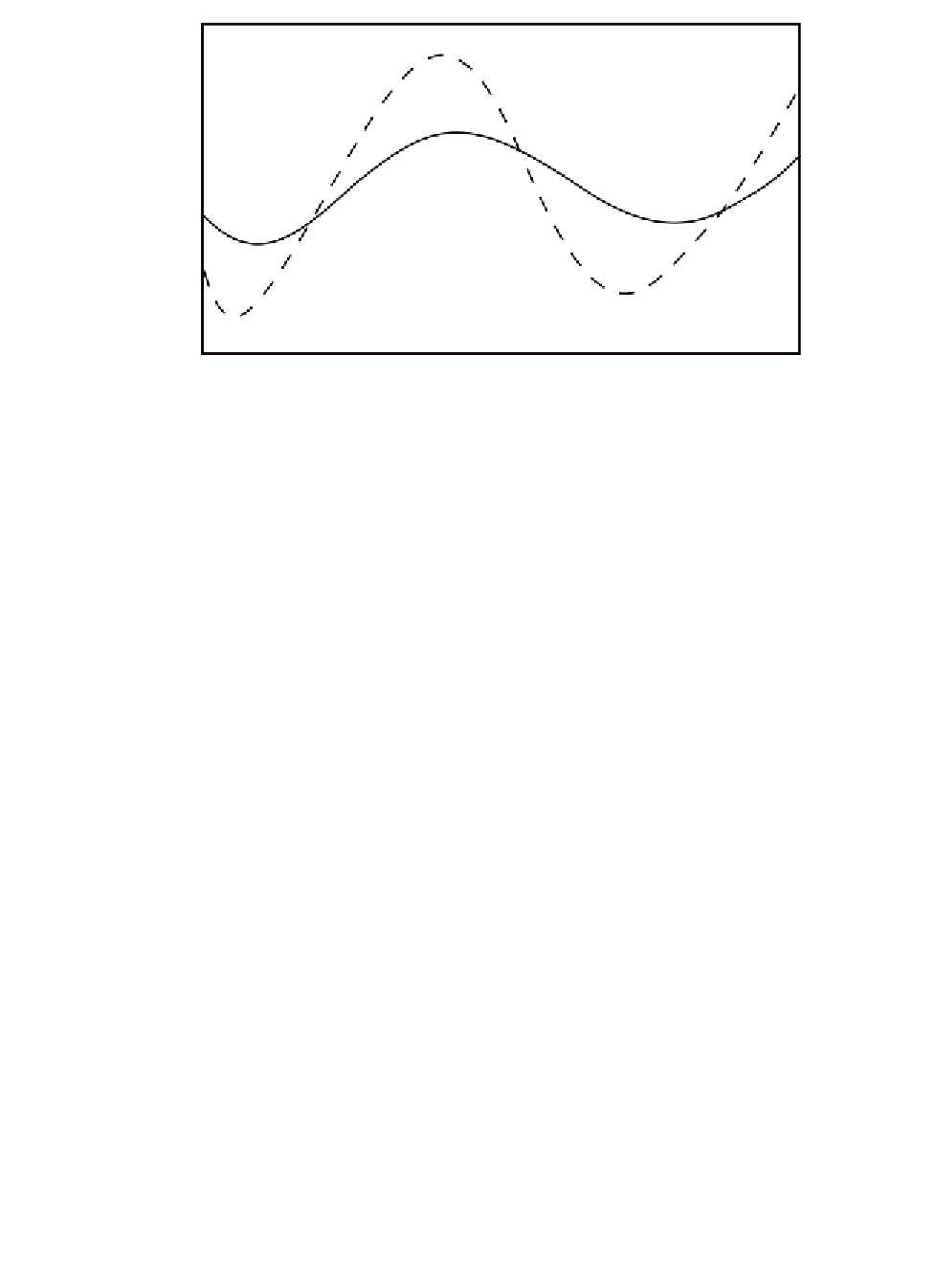Civil Engineering Reference
In-Depth Information
72°
Internal
External
Figure 12-2 Two beneficial effects of thermal mass are to reduce the peak interior temperature shifts
and to delay the time that the peak occurs.
orientation may affect the amount of daylight that illuminates the space versus the amount of artificial
lighting needed—and the way in which natural light contacts surfaces plays into thermal mass considerations.
MATERIALS AND RESOURCES
The key ingredient in concrete is cement. It is the glue that binds water and aggregates into a solid mass. While
cement manufacturing is energy intensive, improvements in the process over many decades have resulted in
green house gas (GHG) reductions per ton of material produced (Ref.12.5). And the bulk of concrete is
comprised of aggregates, which are very low embodied energy materials. Supplementary cementing materials
(SCMs), which are typically by-products of other industries, can replace a portion of cement to lessen
concrete's environmental footprint.
In the U.S., fresh concrete is locally available most everywhere, with the average distance from a ready mix
plant to a project site being 14.4 miles (Ref.12.6). Most concrete ingredients are abundant, locally sourced, and
require minimal processing and transportation. Most materials used in the production of reinforced concrete
are also recycled or recyclable. As just noted, SCMs often come from other industries and using them in
concrete reduces landfill burdens. Crushed concrete can replace a portion of virgin aggregate in new concrete,
but it is more commonly used as base material for new pavement. Steel reinforcement (rebar)
is made predominantly from recycled rail steel. Recycling water from production and clean-out operations is
becoming more common in the ready mix industry, although it must meet certain chemical requirements
for use in concrete. Ultimately, reinforced concrete has a large potential for recycled content—and it can be
recycled at the end of a structure's life, too.
Concrete systems for medium to taller buildings are especially desirable because the repetition allows for
formwork reuse. Climbing form technology offers speed and economy, which saves money for the building
and is resource efficient. It also implies that designers strive for repetition in building layout from one floor
to the next, which also leads to simplicity of design. And whether concrete is cast at the site or offsite,
panelizing the design can lessen material waste.



Search WWH ::

Custom Search